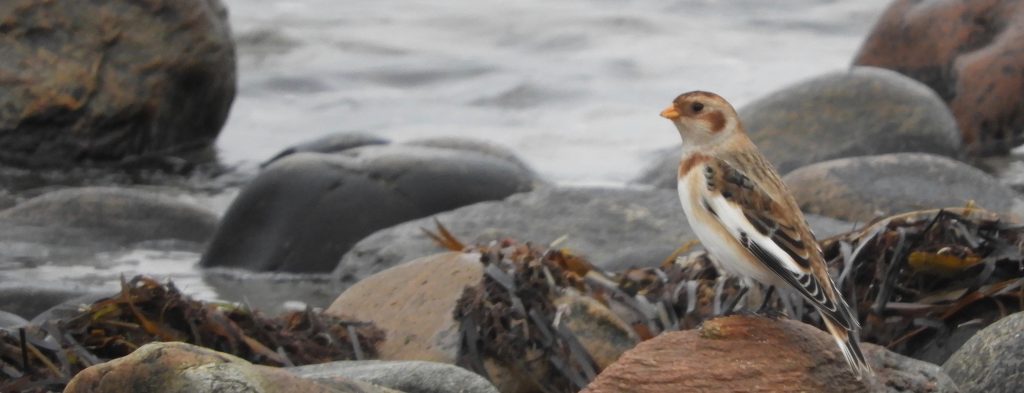 Rørvig, Denmark. October 22, 2022. Scanning the length of a long sandy beach, I could see far away a large bird resting on the biggest of a cluster of tide-washed rocks. It was large enough to be a goose but puzzling because it had a distinctly white back above a dark body and in my experience, waterfowl are more often the the other way up, dark above and white below. It was the sort of thing that needed to be investigated, but for a lot of effort; and what if it was just a farmyard escape? Such was the debate: was it was worth the time and effort to march the half kilometre or so to take a look.
Rørvig, Denmark. October 22, 2022. Scanning the length of a long sandy beach, I could see far away a large bird resting on the biggest of a cluster of tide-washed rocks. It was large enough to be a goose but puzzling because it had a distinctly white back above a dark body and in my experience, waterfowl are more often the the other way up, dark above and white below. It was the sort of thing that needed to be investigated, but for a lot of effort; and what if it was just a farmyard escape? Such was the debate: was it was worth the time and effort to march the half kilometre or so to take a look.
But the bird looked settled, unlikely to fly off and my son was engrossed fishing for sea-trout so, following a rough and occasional path, I set off for a closer look. Eventually it became clear that it was not an escapee and nor was it a goose, but a large duck, a male Common Eider. It was indeed settled and generally unconcerned by my approach. I took several photos including this one below where it has been joined by a female. An impressive bird and quite common along arctic and subarctic shorelines of the northern hemisphere.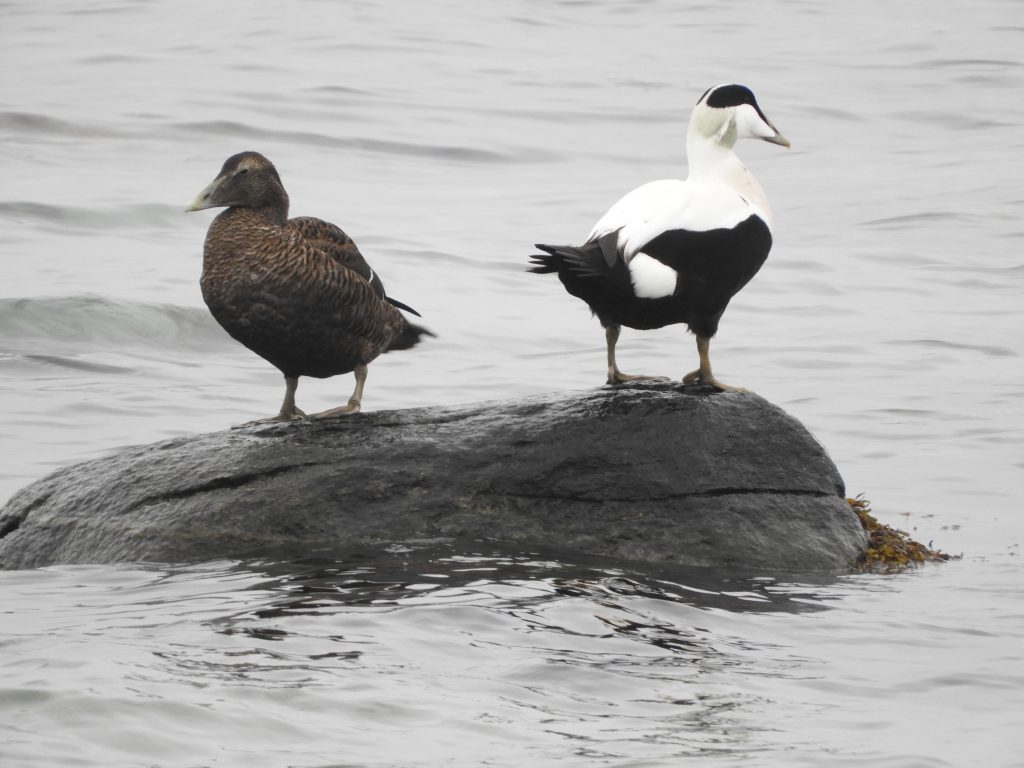
Nearby was a small cluster of Sanderlings, who were similarly unmoved by my presence, charming and they also allowed me to take many photos.
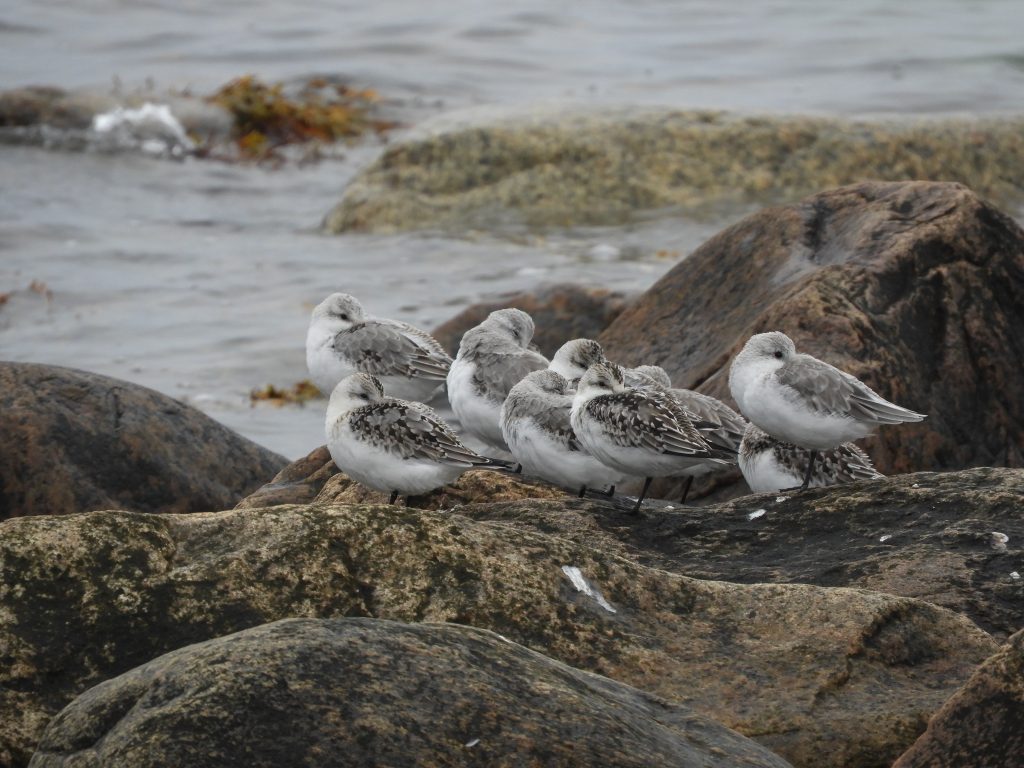
As I turned to head back, I disturbed a small bird that flitted just a few yards to settle close to the water’s edge. I immediately recognized it as a female Snow Bunting, an identification that might have been tricky had I not spent so much time working with them in past winters. They are very pretty, even cute little birds. Snow Buntings are high-Arctic, circumpolar in distribution and are not seen very often in Ontario, not that they’re particularly rare but, for us, they are a bird of the coldest months and you do need to be in the right, bitingly cold, snow-drifted field at the right time to see them.
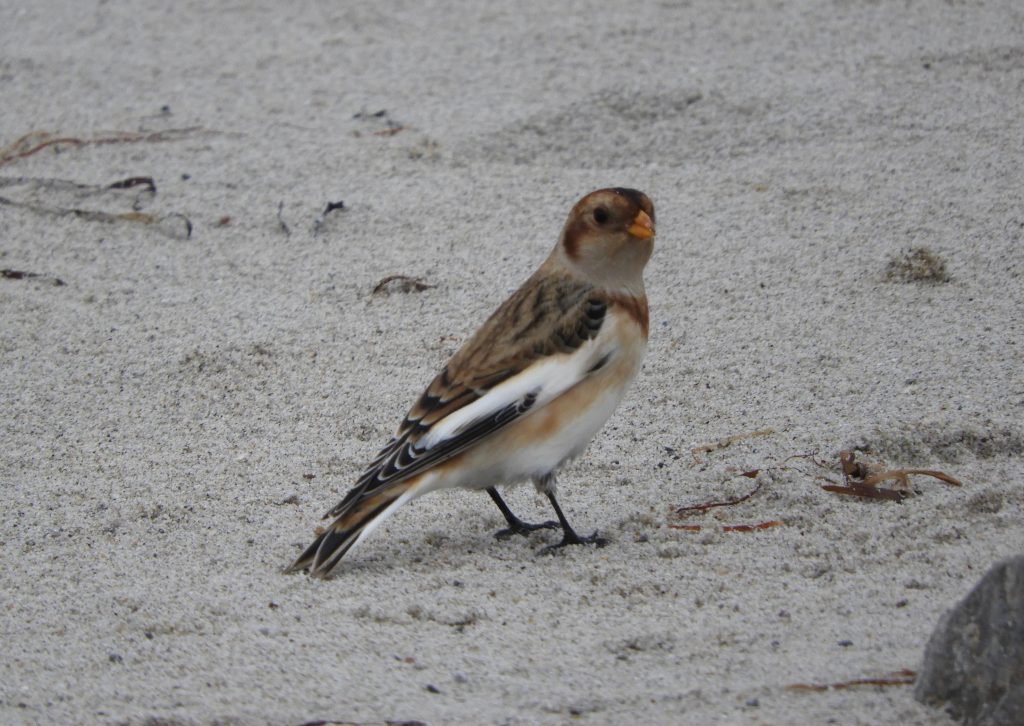
The three species: Common Eider, Sanderling and Snow Bunting are alI Arctic breeders. I had been musing that the eider was my best bird today until the Snow Buntings appeared, becoming a true My Bird of the Day surprise, a small group of three, all females working their way among rocks at the edge of the Kattegat, the straits separating Denmark from Sweden.
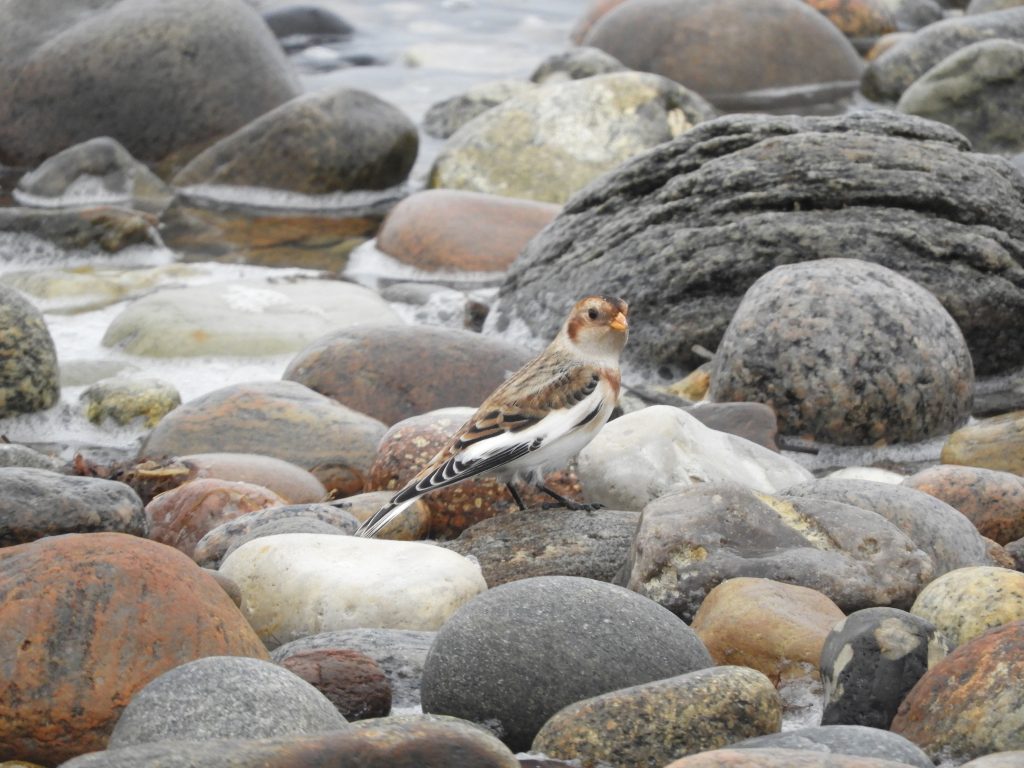
Thank you for the places you take me to!!
Not rare, but beautiful indeed. Thank you for the post!
Glad you’re enjoying your trip Peter.
Grand Manan is the only place I’ve seen Common Eiders like that in Canada — a very handsome male bird.
That’s some nice Bunting camouflage in the rocks! Beautiful.
I also like your artistic Sanderling photo with its ‘rolling rock waves.’ That’s one to enlarge and frame, I think.